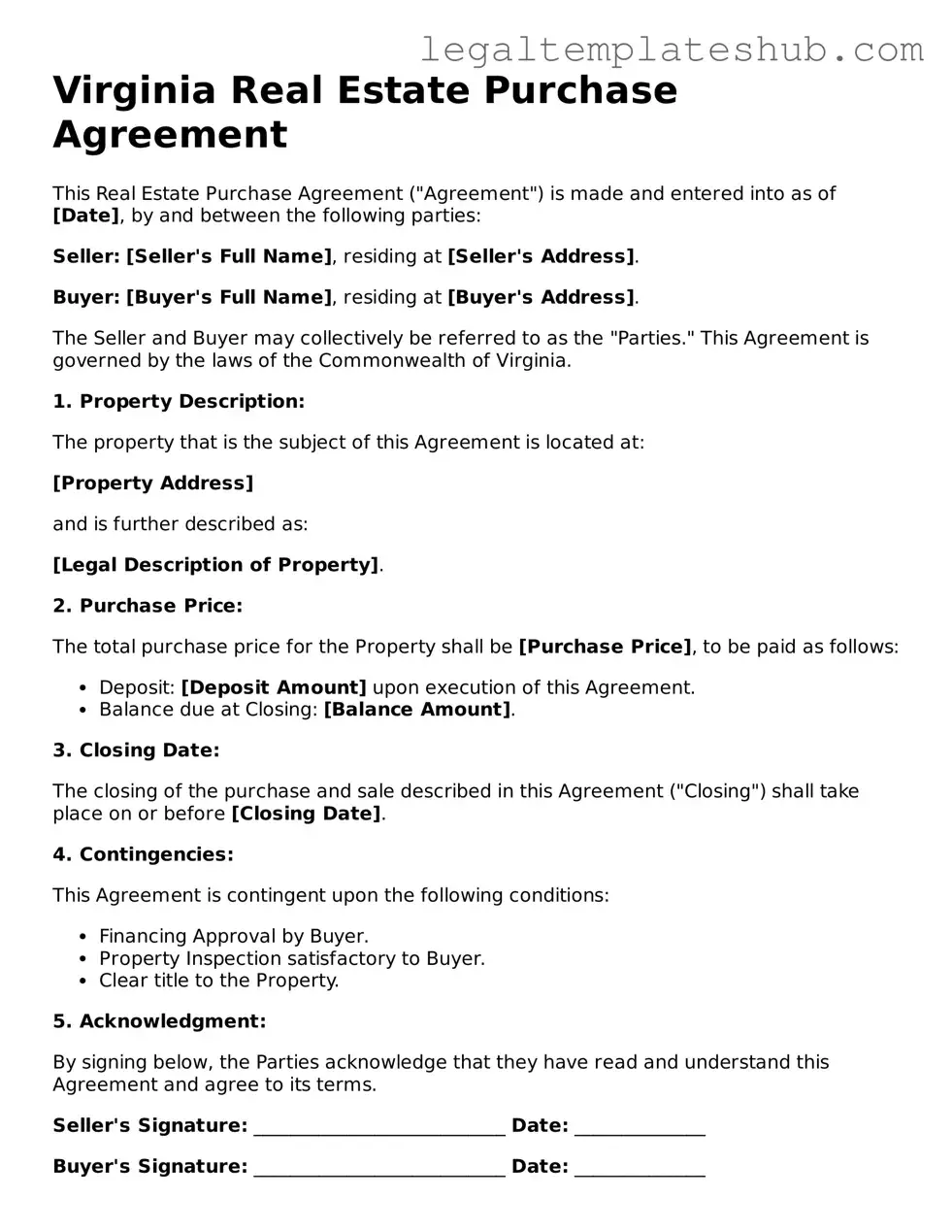Printable Real Estate Purchase Agreement Document for Virginia
The Virginia Real Estate Purchase Agreement is a legal document that outlines the terms and conditions under which a property will be bought and sold in Virginia. This form serves as a crucial tool for both buyers and sellers, providing clarity and protection during the real estate transaction process. Understanding its components can empower individuals to navigate their property deals with confidence.
Ready to take the next step? Fill out the form by clicking the button below.
Access Editor
